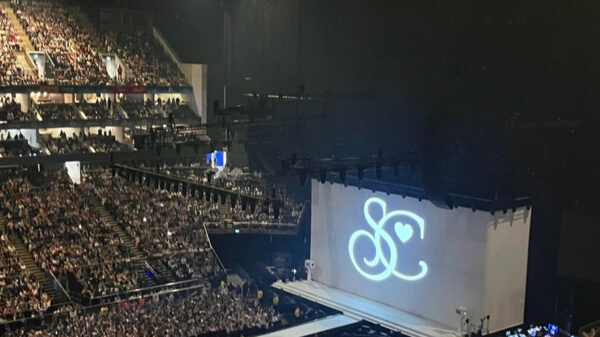Staff writer Margo Sautelle dives into the coquette aesthetic, raising questions about the real implications of the trend, the meaning of girlhood and the multifaceted nature of femininity.
The rise of the coquette aesthetic in recent years has given many the perfect opportunity to embrace a soft and delicate side of their femininity – incorporating bows, lace and pastel colours into their everyday attire. In February 2022, Grazia described coquette as a lifestyle with “self-love attached to its core”, involving the romanticisation of “different facets of life as a whole”. Thanks to platforms like TikTok, however, the trend has become increasingly satirical, with users putting pretty pink ribbons on just about anything to embellish the ordinary. Sierra Palian is one of many TikTok users to have contributed to what she described to The New York Times as a “large-scale inside joke”, gaining more than 11 million views on her video featuring a glass of ice water – the ice cubes tied in pink bows. Nevertheless, Palian claims that the trend is “not ditsy culture” but rather “hyper feminine” with a “self-awareness to it”. We are therefore inclined to explore the depths of this highly popular trend, and the flaws which are often shrouded by absurd takes on it. What might seem like a playful touch, or a pull of nostalgia to girlhood by adding a bow, may also be a trend with some darker undertones.
A blast from the past
The origins of coquette fashion date as far back as Marie Antoinette, rising to popularity in the early 2010s with influences such as Gossip Girl’s Blair Waldorf, and in a new way today with various sources of inspiration, including Lana Del Rey’s music and the Netflix series Bridgerton. Stylist Marisa Ledford told the publication People that the fashion trend is “Gen Z’s take on flirty, soft, hyper-feminine style which references the Victorian Regency era”, this contemporary reiteration all the more empowering. New silhouettes have reinterpreted pieces that “historically restricted women’s bodies”, such as Tory Burch’s pastel pink hoop dress presented during 2023 fashion month. Whilst incorporating a greater sense of freedom to the original hoop dress, the piece still managed to showcase the timelessness of coquette in its charm and elegance.
Critics of the aesthetic, however, have addressed its failure over time to include people of colour and a range of body types, as these whimsical fashion staples have been historically represented by thin, white women. Even today, on primarily visual platforms like Pinterest, Eurocentric features and petite body types are often associated with coquette fashion, which as the student publication Cherwell noted, has led to some harmful associations with “disordered eating and unrealistic standards”. The historically negative trend needs reinterpretation, with more diverse coquette influencers, such as the popular Chazlyn Yvonne, to help eliminate the exclusivity of this aesthetic community.
The essence of girlhood
For many, coquette clothing is a powerful act of self-reclamation; it has allowed women to tap into their nostalgia and bring a playfulness into their adult lives, after averting the notion of “girliness” for so long. As Amira Mohamed, a 22-year-old from North London, told the BBC: coquette clothing is “a style of dressing for ourselves”, to embrace being feminine after “not being taken seriously” for being “girly” while growing up. This form of internalised misogyny is the essence of what coquette actively resists: the coquette trend, as an expression of hyper-femininity and girlhood, is important in its subversion of the dictation of gender roles. Women are choosing to finally embrace their “girliness” for entirely their own benefit.
Various subgenres of the coquette aesthetic, however, have been criticised for their infantilization of women, with emphasis on the ‘nymphet’ aesthetic, which draws influences from Nabokov’s highly controversial 1955 novel Lolita. The novel sexualises a young school girl from the male gaze of an older man, perpetuating an eroticism of innocence and youth, and therefore renders the aesthetics’ subgenre extremely problematic. More broadly, however, the coquette aesthetics’ roots in nostalgia, with soft and playful trends, can often lead to a fixation on appearances of innocence and youth.
While harmless in many ways, this disconnect can, nonetheless, obscure the beauty and power found uniquely in female adulthood. Despite its struggles, female adulthood is an undoubtedly enriching experience, though some may argue that the coquette trend is feeding off a troublesome “tenet of capitalism”: selling girlhood to women. A trend ostensibly of oversized bows and babydoll dresses is helping to foster insecurities among adult women, who increasingly look to anti-ageing in an effort to regain this ideal of youth, put under an even harsher spotlight with the rise of coquette.
“A ditsy culture”?
Though it may help to romanticise the ordinary, adding a pretty pink bow clearly cannot hide the various flaws of the coquette trend. As Palian claims, the trend is far from a “ditsy culture”, through empowering women to embrace all shades of femininity, though we must remember not to view it solely through rose-tinted glasses. Behind increasingly absurd TikTok videos of the coquette bow, set to Lana Del Rey’s “Let The Light In”, there is a darker side to this ever-growing trend of hyper-femininity.
















